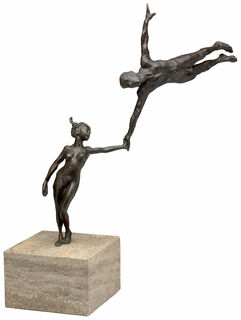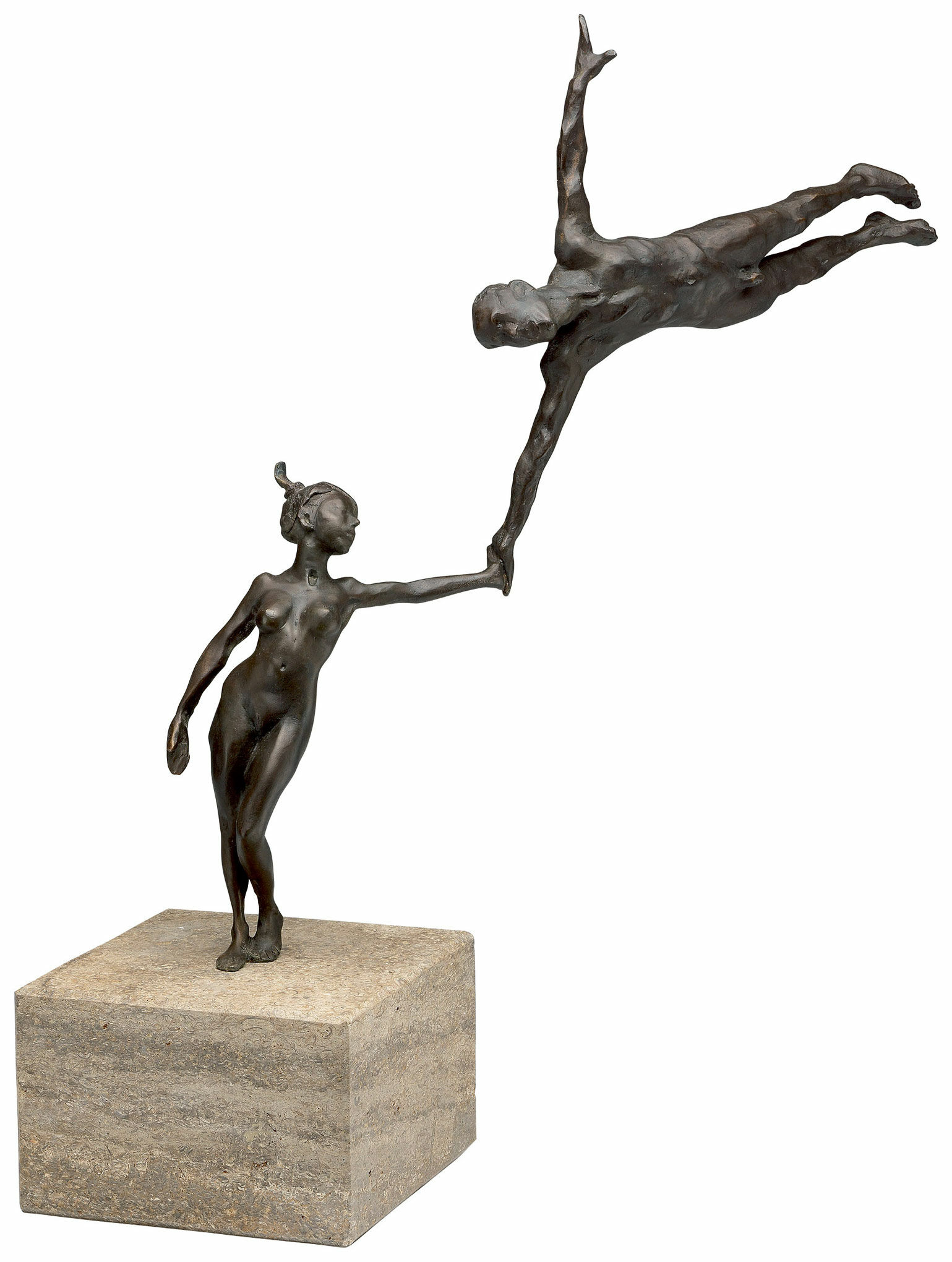Sculpture "Trust - Partnership Trick", bronze
Sculpture "Trust - Partnership Trick", bronze
Quick info
ars mundi Exclusive Edition | limited, total 302 copies | bronze with pedestal | height incl. pedestal 55 cm | weight approx. 6.5 kg
Video
Detailed description
Sculpture "Trust - Partnership Trick", bronze
"His concept is quality" - this is what Andrés-Gayón once said about his work. Each of the artist's works underwent a series of drafts until it finally reached its final design - this time it was a cast bronze. Nevertheless, his sculpture "Trust - Partnership Trick" is not really "realistic". Already the physical impossibility of "balancing" the two figures clears that up. But depicting the reality was never Andrés-Gayóns goal. He was more interested in the pictorial realisation of an essential human feeling that eludes rational "calculability": It is trust that makes the impossible possible.
"Partnership Trick" expresses visually what can hardly be described in words. And it is a wonderful gift for someone you trust - whether in the sense of a friendship, a love affair or a marriage of many years.
Bronze multiple on a pedestal of shell limestone, height incl. pedestal 55 cm. Weight approx. 6,5 kg. The sculpture is limited to 299 copies (+ 3 E.A. copies). Exclusively for ars mundi.
Customer reviews
entsprach voll meinen Erwartungen
super Service !!! wir sind begeistert!
About Antonio de Andrés-Gayón
1961-2012
In times when art often engages provocatively with art-foreign "concepts," Antonio de Andrés-Gayón considered himself a sculptor with respect for art history. Whether it was a drawn nude or a sculpture, questions about human expressiveness and its artistic feasibility were foremost in his mind. "My concept", Andrés-Gayón said with a wink, "is quality". And so, each of the artist's works underwent a series of drafts until it finally solidified into form and was realised.
An alloy of copper with other metals (especially with tin) used since ancient times.
When casting bronze, the artist usually applies the lost-wax technique which is dating back more than 5000 years. It's the best, but also the most complex method of producing sculptures.
First, the artist forms a model of his sculpture. It is embedded in a liquid silicone rubber mass. Once the material has solidified, the model is cut out. The liquid wax is poured into the negative mould. After cooling down, the wax cast is removed from the mould, provided with sprues and dipped into ceramic mass. The ceramic mass is hardened in a kiln, whereby the wax flows out (lost mould).
Now we finally have the negative form, into which the 1400° C hot molten bronze is poured. After the bronze had cooled down, the ceramic shell is broken off and the sculpture is revealed.
Now the sprues are removed, the surfaces are polished, patinated and numbered by the artist himself or, to his specifications, by a specialist. Thus, each casting becomes an original work.
For lower-quality bronze castings, the sand casting method is often used which, however, does not achieve the results of a more complex lost-wax technique in terms of surface characteristics and quality.
Graphic or sculpture edition that was initiated by ars mundi and is available only at ars mundi or at distribution partners licensed by ars mundi.
Term for an art object (sculpture, installation), which is produced in multiple copies in a limited and numbered edition according to the artist‘s will.
Artist's multiples have been called the most accessible and affordable art on the market.
A plastic work of sculptural art made of wood, stone, ivory, bronze or other metals.
While sculptures from wood, ivory or stone are made directly from the block of material, in bronze casting a working model is prepared at first. Usually, it is made of clay or other easily mouldable materials.
The prime time of sculpture after the Greek and Roman antiquity was the Renaissance. Impressionism gave a new impulse to the sculptural arts. Contemporary artists such as Jorg Immendorf, Andora, and Markus Lupertz also enriched sculptures with outstanding works.


